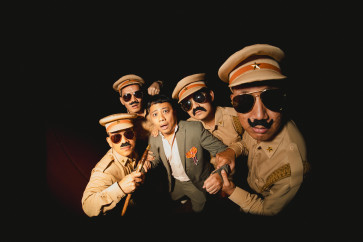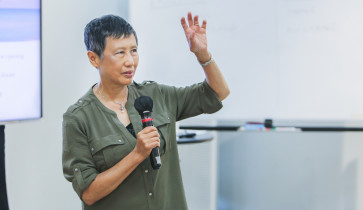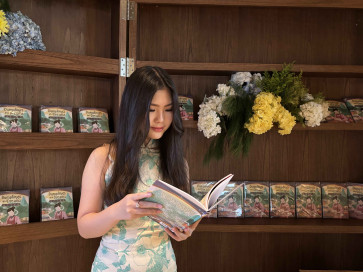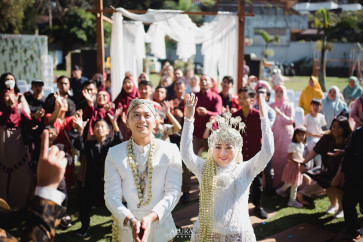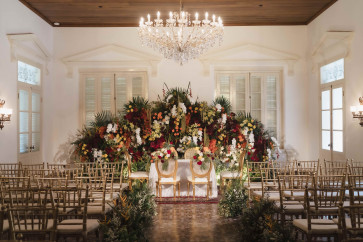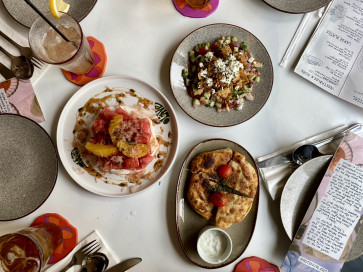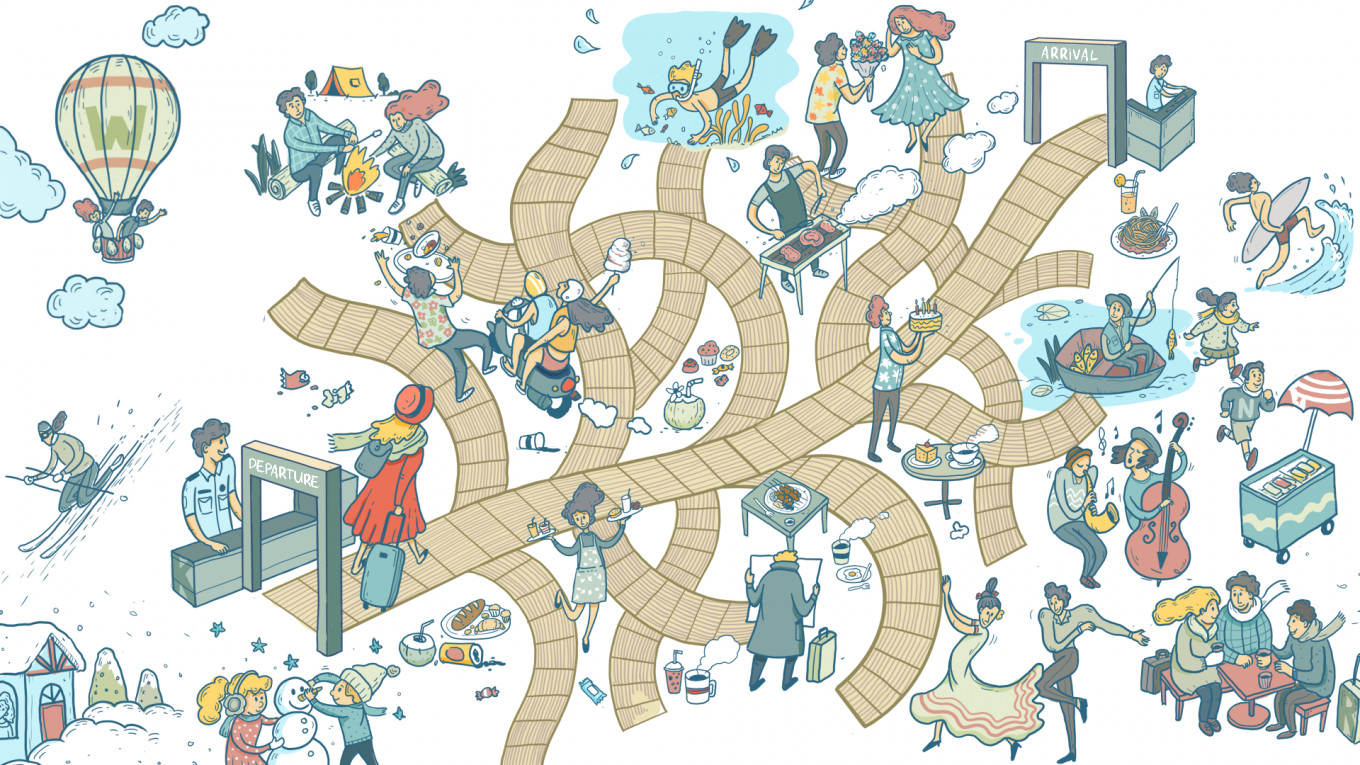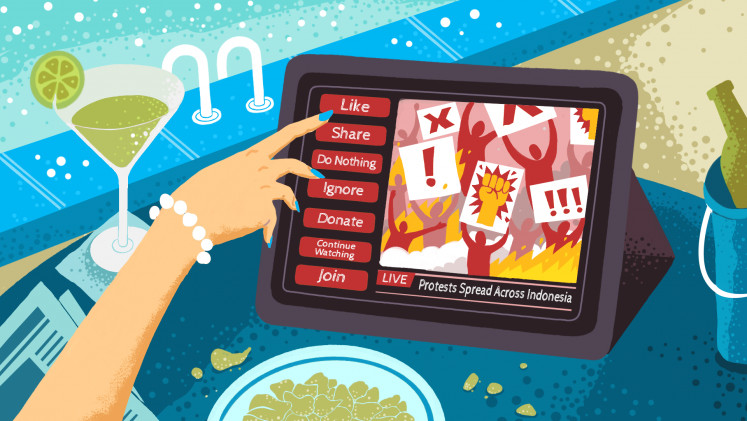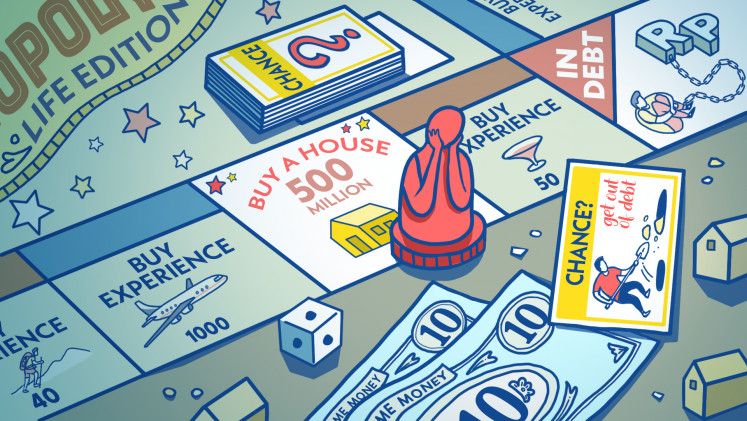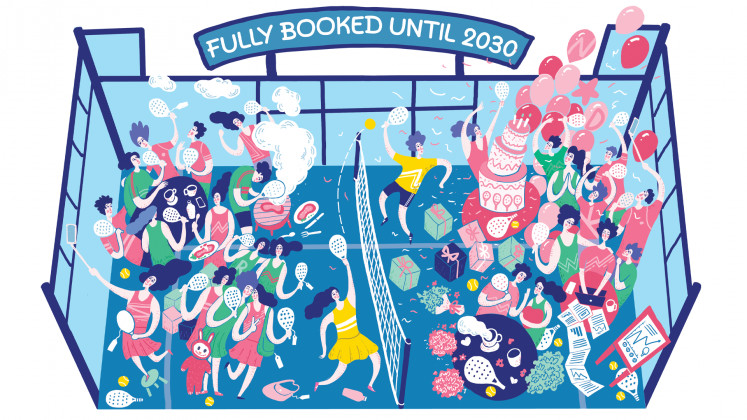“You’ve come a long way. You’ve got this”, a stranger told me one stormy night in Copenhagen.
I was alone in a bar, carrying the weight of a fresh breakup. The trip had been planned for two until my partner pulled out at the last minute, leaving me with a plane ticket, a packed bag and a sense of something unfinished.
I hadn’t intended to talk to anyone that night. When a couple at the next table started looking my way, I thought, Great. Exactly what I need, lovebirds.
But they said hi, and the guy asked: “It’s pretty loud here, isn’t it?”
I found myself replying. We got to talking. Nothing too deep at first, but after a few sips, we veered into the philosophical.
I don’t remember their names, but I do remember how I felt walking out of that bar: lighter, steadier and oddly comforted.

Thank you!
For signing up to our newsletter.
Please check your email for your newsletter subscription.
Redefining the journey
That evening prompted me to reflect on my way of travels and what I’m really after.
Ever since I finished school and started earning, I’ve been an avid traveler, and I’ve always appreciated good company along the way. Someone to share moments with, chat over long train rides, share meals (because eating alone feels a little awkward) and take turns capturing the perfect photos for the ‘gram.
My travel style was structured to the minute: I’d plan every hour, chase picture-perfect attractions and never forget to bring home oleh-oleh (souvenirs). Then I’d return home and jump right back into the hustle: save money, apply for leave, book the next trip and repeat the cycle.
For years, this routine filled my life. But after a while, I realized something was missing.
Beyond the to-do list and the visual highlights, I was longing for deeper experiences and real, human connections.
This led me to seek out trips that offered meaning, not just memories.
Intentional travel
It’s not just me. Whether I’m scrolling through social media or chatting with friends, I see the pattern: More and more people are seeking travel experiences with meaning and purpose, a craving that has grown only stronger post-COVID.
Wellness-focused journeys that cater to physical, spiritual and emotional well-being are booming. From melukat (cleansing the body, mind and soul) rituals in Ubud to Ayurvedic retreats in Goa, and from the physical endurance test of the Borobudur to the Berlin Marathon, people are searching for transformation far from home.
The data backs it up. GlobeNewswire states that the wellness tourism market is forecasted to reach around US$1.1 billion this year.
As life becomes more digital and fast-paced, more people are turning to the outdoors to unplug and recharge. Local trekking and camping trips are gaining traction, not just for their untouched landscapes, but for a chance to connect with locals and a simpler way of life.
On the flip side, luxury nature escapes are gaining momentum, too. Ski trips to Hokkaido and Zermatt are becoming increasingly popular, proving that nature is, indeed, having a moment.
A return to nature often comes hand in hand with a return to culture. Cultural immersion is having a revival. Japan and South Korea are still among the most popular destinations for Indonesians. Many are picking up the language or diving deeper with experiences like learning sushi-making from Japanese home chefs.
Closer to home, spice tours in Banda Neira are drawing those eager to explore Indonesia through its rich culinary and colonial past.
Travel today isn’t just about seeing a place. It’s about feeling it, living it and engaging with it in a meaningful way. But while many set out with that intention, others find it along the way, in the quiet, unexpected moments that arise when you let go of the plan or the unscripted moments in between.
Chasing solitude
One afternoon, I sat down with my good old friend, Violeta, who had just returned from yet another trip to Egypt.
When I asked what she was looking for, her eyes lit up.
“The first time I went, ten years ago, my intention was to go on a spiritual journey, seeking enlightenment,” she recalled.
“I meditated inside a pyramid with a small group of people. We had it all to ourselves. It was magical.”
She has since returned to Egypt eight times.
“That meditation trip was just the beginning,” she said.
“After a while, I stopped chasing the extraordinary, and rather enjoyed the ordinary.”
She continued, “Something keeps pulling me back. It takes time to understand the country. It’s like an onion. You have to peel it layer by layer.”
I asked whether her spirituality had deepened after all those visits.
She smiled.
“Turns out I didn’t need rituals. I find meaning in small moments. Watching how people interact, noticing how different they are from those back home in Switzerland, where people tend to be ‘colder’. I listen to the call for prayers. I see families sticking together, people smile. And that’s more than enough.”
Small moments reveal their beauty when you slow down.
Walk the walk
Then, a thought struck me: What’s the slowest, most deliberate way to arrive somewhere? You walk.
This led me to my colleague, Kateryna. When we first met, she introduced herself by saying, “I did the Camino de Santiago.”
At first, I had no idea what she was bragging about. She explained that it’s a long-distance walking route in Spain, taken by people for all sorts of reasons: adventure, religious devotion and spiritual reflection.
Depending on the route, the journey can stretch anywhere from 100 to over 1,000 kilometers. Those who walk it are known as pilgrims.
“I walked 280 kilometers from Porto, Portugal, to Santiago de Compostela in Spain,” Kateryna said.
“It took me 13 days.”
My jaw dropped.
She did the walk during a job transition, after leaving a previous role where taking a long break was difficult.
“I wanted something to look forward to and completely switch off. With a good, looong walk,” she laughed.
Along the way, she met fellow pilgrims from across the world, from Australia to South Korea. According to the official Pilgrim Office of Santiago de Compostela, nearly 500,000 people completed the Camino last year, a record-breaking number. Everyone was walking with their own story, their own route and at their own pace.
For 13 days, carrying a 10-kilogram backpack, Kateryna walked not just through beautiful landscapes but into a deeper version of herself.
“I caught the sunrise, the sunset. I walked through villages, along the ocean. I lost track of time as I completely disconnected from my phone. It was just me and the road, and being fully present.”
After a while, I stopped chasing the extraordinary, and rather enjoyed the ordinary. - Violeta
Some of the things that stayed with her most weren’t just the miles walked, but the unplanned human moments: pilgrims who shared meals, strangers who helped when she felt faint and fellow travelers who reminded her it was okay to rest. A dog even followed along her for part of the route. And there were the countless well-wishers offering a simple but powerful “Buen Camino!”, a phrase that kept her going, even when painful blisters made every step feel like a small win.
“The last 10 kilometers were the hardest,” she said.
“I knew I was close. I got this adrenaline feeling. I kept repeating to myself: The blisters are just small things. You're strong. It's just a minor inconvenience. It's all in your head.”
When she finally arrived at Plaza del Obradoiro, standing in front of the grand Cathedral of Santiago de Compostela, she called her dad to say, “I did it. And I’ll never do this again!”
When she finished her story, I asked her, “Would you do it again?” and she said, “Of course!”
Tracing the roots
Inspired by these women, I began to shift the way I travel.
I grew more confident in going solo. I booked longer breaks. I don’t have the courage to walk as far as Kateryna did, but I’ve started to give myself more breathing room between itineraries. I wander more, soak in my surroundings and go out without a map.
Sometimes, I even allow myself to get a little lost.
I didn’t quite know what I was inviting in when I said this. Be careful what you wish for, they say.
Then something happened. I was in London visiting a friend. After living in a small city for years, London was overwhelming. It was a sweltering summer, and with multiple train disruptions, I found myself stranded in a station on the outskirts. My train had been canceled, my phone battery was dead, and the platform was nearly empty.
I glanced around, hoping someone might help. This is London, I thought. The harsh reality of big cities: People wrapped up in their own lives, too ignorant to notice anyone else.
Nearby, a teenager stood swaying slightly to music only she could hear, eyes fixed on TikTok. I gave up on asking. Fine, I told myself. I’ll just walk and see where I end up.
But just as I turned to leave, she slipped off her headphones and asked, “Your train’s canceled, too?”
“Yes,” I replied. “I’m thinking of just taking a bus.”
She shook her head. “The bus is not reliable. Go to the next train station instead.”
I explained that my phone had died, so I couldn’t check directions. I said, “It’s okay. I’ll figure it out.”
Then she offered, “Want me to walk you there? It’s only about 20–25 minutes.”
I was stunned. “You’d walk that far with me?”
“Yeah, why not?” I was speechless. And so, we walked together. It turns out this generation might be a little different than I thought.
We chatted along the way. She asked where I was from. When I told her Indonesia, she said “No waaay!” excitedly. Her grandfather, she said, was of Cape Malay descent.
A moment of quiet embarrassment hit me. I knew very little about that part of history. She explained that the Cape Malays were descendants of slaves and exiles brought from Indonesia during the colonial period.
There I was, learning about my own country’s forgotten history. Unexpectedly, from a stranger in London.
It reminded me that sometimes, the most lasting travel experiences don’t come from epic itineraries or perfectly timed sunsets. They happen in the in-betweens. A walk between train stations. A shared moment with someone you’ll never see again. A small kindness that shifts something inside you.
I used to travel for the highlights. Now, I travel for these.
Cherika Hardjakusumah is an Indonesian diaspora member in Geneva. She loves jazz, forest walks and alpine daydreams.





